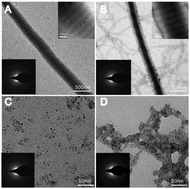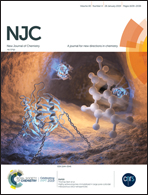Phosphorylated chitosan to promote biomimetic mineralization of type I collagen as a strategy for dentin repair and bone tissue engineering
Abstract
Herein, the hierarchical assembly of nanoapatite within a type I collagen matrix was achieved through biomimetic mineralization in vitro using phosphorylated chitosan (Pchi) to promote mineralization. The mineralization kinetics, nanostructure of the collagen matrix, and mineral content were evaluated by Fourier-transform infrared spectroscopy, transmission electron microscopy, and scanning electron microscopy. In addition, differential thermal analysis was used to quantify the extent of mineralization. The results showed that mineralized collagen fibrils were well encapsulated by newly formed nanoapatite mineral nanocrystals. In addition, the use of Pchi was found to significantly shorten the self-assembly process, achieving remineralization of calcium-depleted dentin within 96 h. Chemical modification of collagen fibers with Pchi accelerated the rate of crystallization due to the excellent ion chelating properties of chitosan derivatives and their ability to cause a high degree of conglutination. The modification process created new nucleation sites on the fibers onto which amorphous calcium phosphate could attach within the collagen I matrix. This novel biomimetic mineralization technique provides an efficient method to produce an advanced mineralized matrix and may present an important strategy for future bone tissue engineering applications.



 Please wait while we load your content...
Please wait while we load your content...